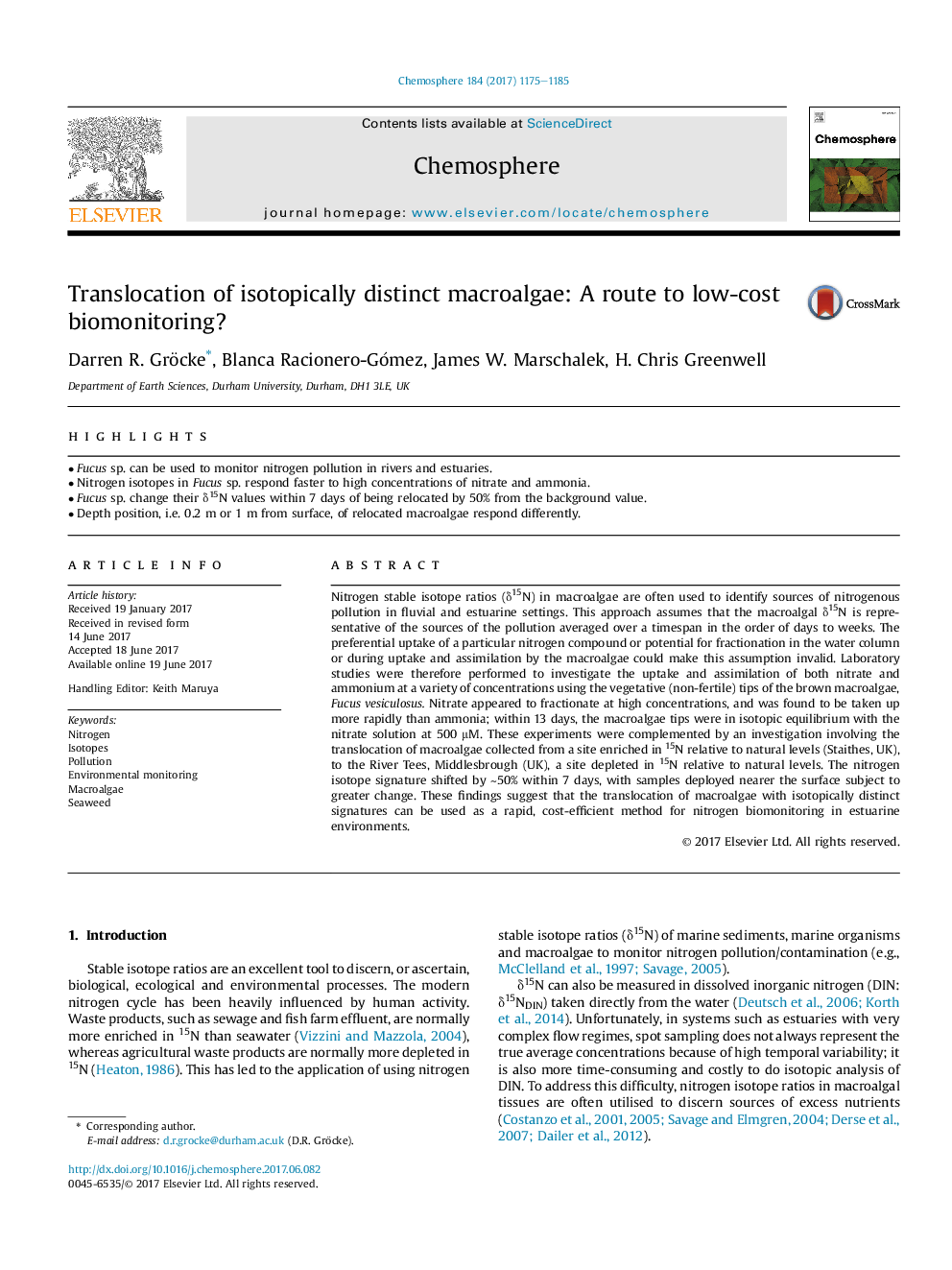| کد مقاله | کد نشریه | سال انتشار | مقاله انگلیسی | نسخه تمام متن |
|---|---|---|---|---|
| 5746230 | 1618787 | 2017 | 11 صفحه PDF | دانلود رایگان |
- Fucus sp. can be used to monitor nitrogen pollution in rivers and estuaries.
- Nitrogen isotopes in Fucus sp. respond faster to high concentrations of nitrate and ammonia.
- Fucus sp. change their δ15N values within 7 days of being relocated by 50% from the background value.
- Depth position, i.e. 0.2Â m or 1Â m from surface, of relocated macroalgae respond differently.
Nitrogen stable isotope ratios (δ15N) in macroalgae are often used to identify sources of nitrogenous pollution in fluvial and estuarine settings. This approach assumes that the macroalgal δ15N is representative of the sources of the pollution averaged over a timespan in the order of days to weeks. The preferential uptake of a particular nitrogen compound or potential for fractionation in the water column or during uptake and assimilation by the macroalgae could make this assumption invalid. Laboratory studies were therefore performed to investigate the uptake and assimilation of both nitrate and ammonium at a variety of concentrations using the vegetative (non-fertile) tips of the brown macroalgae, Fucus vesiculosus. Nitrate appeared to fractionate at high concentrations, and was found to be taken up more rapidly than ammonia; within 13 days, the macroalgae tips were in isotopic equilibrium with the nitrate solution at 500 μM. These experiments were complemented by an investigation involving the translocation of macroalgae collected from a site enriched in 15N relative to natural levels (Staithes, UK), to the River Tees, Middlesbrough (UK), a site depleted in 15N relative to natural levels. The nitrogen isotope signature shifted by â¼50% within 7 days, with samples deployed nearer the surface subject to greater change. These findings suggest that the translocation of macroalgae with isotopically distinct signatures can be used as a rapid, cost-efficient method for nitrogen biomonitoring in estuarine environments.
Journal: Chemosphere - Volume 184, October 2017, Pages 1175-1185
